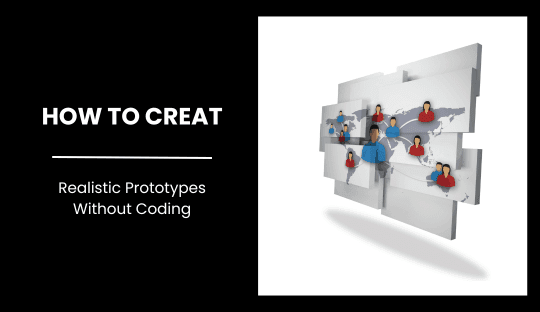
How to Create Realistic Prototypes Without Coding
In today’s digital world, creating realistic prototypes is essential for visualizing ideas and validating designs before full-scale development. At Flykez CO, a leading creative brand company in Lithuania, we specialize in website design & development, search engine optimization, brand design & brand identity, digital marketing, and UI & UX design. This blog post explores how you can create realistic prototypes without writing a single line of code, using various tools and techniques.
Understanding the Importance of Prototypes
Prototypes are crucial in the design process as they allow you to test and refine your concepts. They help in visualizing the user experience, identifying potential issues, and gathering feedback early in the development cycle. Whether you are working with 3D prototypes, wireframes, or high-fidelity models, a well-crafted prototype can significantly enhance your project’s success.
Choosing the Right Prototyping Tools
Selecting the right tools is the first step in creating realistic prototypes without coding. Here are some of the best prototyping tools that can help you achieve this:
- Figma: A collaborative design tool that allows you to create interactive prototypes with ease. Figma’s powerful features enable you to design, prototype, and gather feedback in real-time.
- Adobe XD: Ideal for designing high-fidelity prototypes, Adobe XD offers a range of features for creating interactive and animated prototypes. It also supports collaboration, making it perfect for team projects.
- Sketch: Known for its user-friendly interface, Sketch is excellent for creating detailed UI designs and wireframes. With various plugins, you can enhance its prototyping capabilities.
- InVision: A versatile tool that allows you to create interactive prototypes and gather feedback from stakeholders. InVision integrates well with other design tools like Sketch and Photoshop.
- Blender: For 3D prototypes, Blender is a powerful open-source tool that offers extensive features for modeling, animation, and rendering.Also Read About Prototyping Like a Pro: Secrets to Success
Steps to Create Realistic Prototypes
1. Start with Low-Fidelity Wireframes
Begin your prototyping process with low-fidelity wireframes. These are basic sketches that outline the layout and structure of your design without detailed elements. Low-fidelity wireframes help you focus on the functionality and user flow without getting bogged down by aesthetics.
- Tools: Balsamiq, Sketch, Figma
2. Develop High-Fidelity Prototypes
Once you have validated the structure and flow with low-fidelity wireframes, move on to high-fidelity prototypes. These prototypes include detailed design elements such as colors, typography, and images, providing a more realistic representation of the final product.
- Tools: Adobe XD, Figma, Sketch
3. Add Interactivity
To make your prototypes more realistic, add interactive elements such as clickable buttons, hover effects, and transitions. Interactive prototypes allow users to experience the flow and functionality of the design as if it were a real product.
- Tools: InVision, Figma, Adobe XD
4. Incorporate 3D Elements
For products that require a more immersive experience, incorporate 3D elements into your prototypes. 3D prototypes provide depth and realism, making them ideal for complex designs such as virtual environments and detailed product models.
- Tools: Blender, Adobe Dimension
5. Use Rapid Prototyping Techniques
Rapid prototyping involves quickly creating and testing prototypes to refine the design iteratively. This approach allows you to gather feedback and make improvements continuously, ensuring that the final product meets user needs.
- Tools: Figma, InVision, Sketch
Best Practices for Creating Realistic Prototypes
1. Focus on User Experience (UX)
Ensure that your prototypes are user-centric by focusing on the user experience. Conduct usability testing to gather feedback and identify areas for improvement. This iterative process helps in creating designs that are intuitive and user-friendly.
2. Collaborate with Your Team
Collaborative design is essential for creating effective prototypes. Use tools that support real-time collaboration and feedback, allowing team members to contribute their insights and expertise.
3. Iterate Based on Feedback
Continuously iterate on your prototypes based on feedback from users and stakeholders. This iterative approach helps in refining the design and addressing potential issues before development begins.
4. Document the Prototyping Workflow
Maintain a clear documentation of the prototyping workflow, including the tools used, iterations made, and feedback received. This documentation serves as a valuable reference for the development team and ensures consistency throughout the project.
Conclusion
Creating realistic prototypes without coding is achievable with the right tools and techniques. By starting with low-fidelity wireframes, developing high-fidelity prototypes, adding interactivity, and incorporating 3D elements, you can create prototypes that effectively visualize your ideas and validate your designs. At Flykez CO, we leverage our expertise in prototyping to deliver innovative and user-centric digital products. For more information about our services, visit our website at www.flykez.com. Let Flykez CO be your partner in transforming your ideas into reality.
